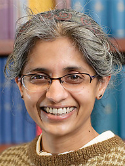Age-adjusted International Prognostic Index predicts autologous stem cell transplantation outcome for patients with relapsed or primary refractory diffuse large B-cell lymphoma Journal Article
| Authors: | Hamlin, P. A.; Zelenetz, A. D.; Kewalramani, T.; Qin, J.; Satagopan, J. M.; Verbel, D.; Noy, A.; Portlock, C. S.; Straus, D. J.; Yahalom, J.; Nimer, S. D.; Moskowitz, C. H. |
| Article Title: | Age-adjusted International Prognostic Index predicts autologous stem cell transplantation outcome for patients with relapsed or primary refractory diffuse large B-cell lymphoma |
| Abstract: | Second-line chemotherapy followed by high-dose therapy (HDT) with autologous stem cell transplantation (ASCT) cures less than half of the patients with relapsed or refractory diffuse large B-cell lymphoma (DLBCL). Prognostic models capable of predicting outcome are essential. In 3 sequential clinical trials, conducted from January 1993 to August 2000, we treated 150 patients with relapsed or primary refractory DLBCL with ifosfamide, carboplatin, and etoposide (ICE) chemotherapy followed by HDT/ASCT for patients with chemosensitive disease. We evaluated the age-adjusted International Prognostic Index at the initiation of second-line therapy (sAAIPI) as a predictor of progression-free survival (PFS) and overall survival (OS). At a median follow-up of 4 years, the PFS and OS are 28% and 34% by intention to treat and 39% and 45% for only those patients with chemosensitive disease. Three risk groups with different PFS and OS were identified by the sAAIPI: low risk (0 factors), 70% and 74%; intermediate risk (1 factor), 39% and 49%; and high risk (2 or 3 factors), 16% and 18% (P < .001 for both PFS and OS). The sAAIPI also predicts the PFS and OS for patients with ICE-chemosensitive disease: low risk, 69% and 83%; intermediate risk, 46% and 55%; and high risk, 25% and 26% (P < .001 PFS and OS). The sAAIPI predicts outcome for patients with relapsed or primary refractory DLBCL in both intent-to-treat and chemosensitive populations. This powerful prognostic instrument should be used to evaluate new treatment approaches and to compare results of different regimens. © 2003 by The American Society of Hematology. |
| Keywords: | adolescent; adult; cancer chemotherapy; cancer survival; controlled study; treatment outcome; aged; aged, 80 and over; disease-free survival; middle aged; survival rate; major clinical study; cancer risk; antineoplastic agents; combined modality therapy; carboplatin; etoposide; antineoplastic combined chemotherapy protocols; risk factors; recurrence; stem cell transplantation; chemosensitivity; ifosfamide; b cell lymphoma; lymphoma, b-cell; predictive value of tests; age distribution; transplantation, autologous; autotransplantation; lymphoma, large-cell, diffuse; humans; prognosis; human; male; female; priority journal; article |
| Journal Title: | Blood |
| Volume: | 102 |
| Issue: | 6 |
| ISSN: | 0006-4971 |
| Publisher: | American Society of Hematology |
| Date Published: | 2003-09-15 |
| Start Page: | 1989 |
| End Page: | 1996 |
| Language: | English |
| DOI: | 10.1182/blood-2002-12-3837 |
| PUBMED: | 12676776 |
| PROVIDER: | scopus |
| DOI/URL: | |
| Notes: | Export Date: 12 September 2014 -- Source: Scopus |
Altmetric
Citation Impact
BMJ Impact Analytics
MSK Authors
Related MSK Work












